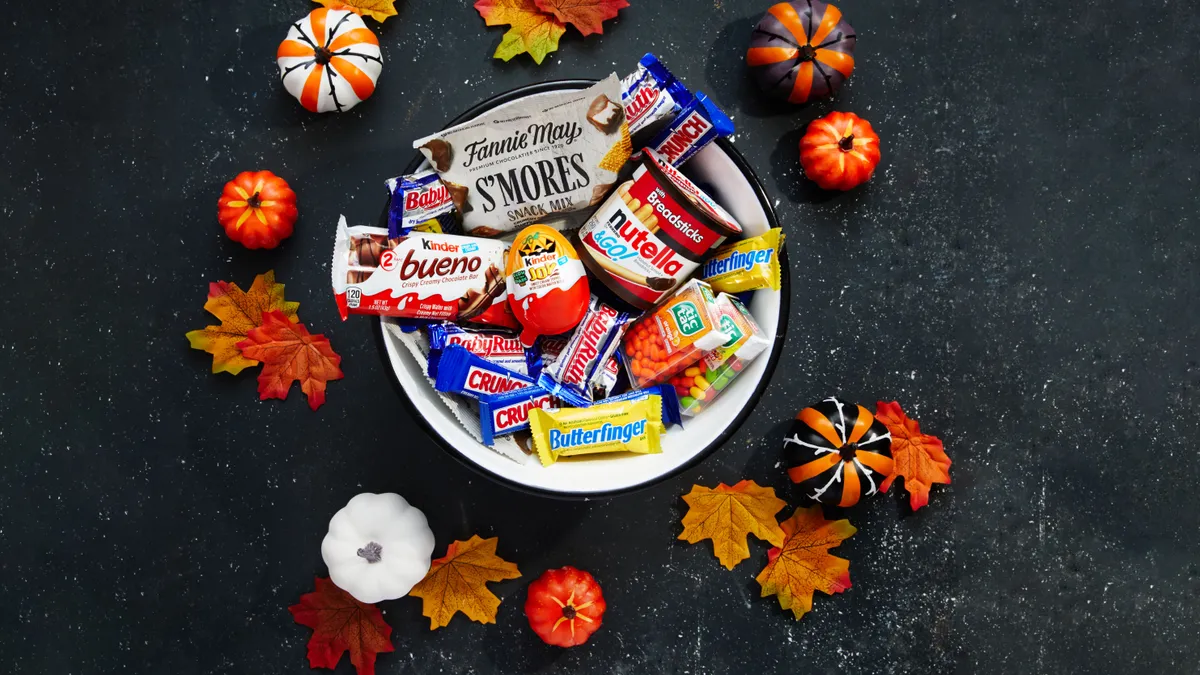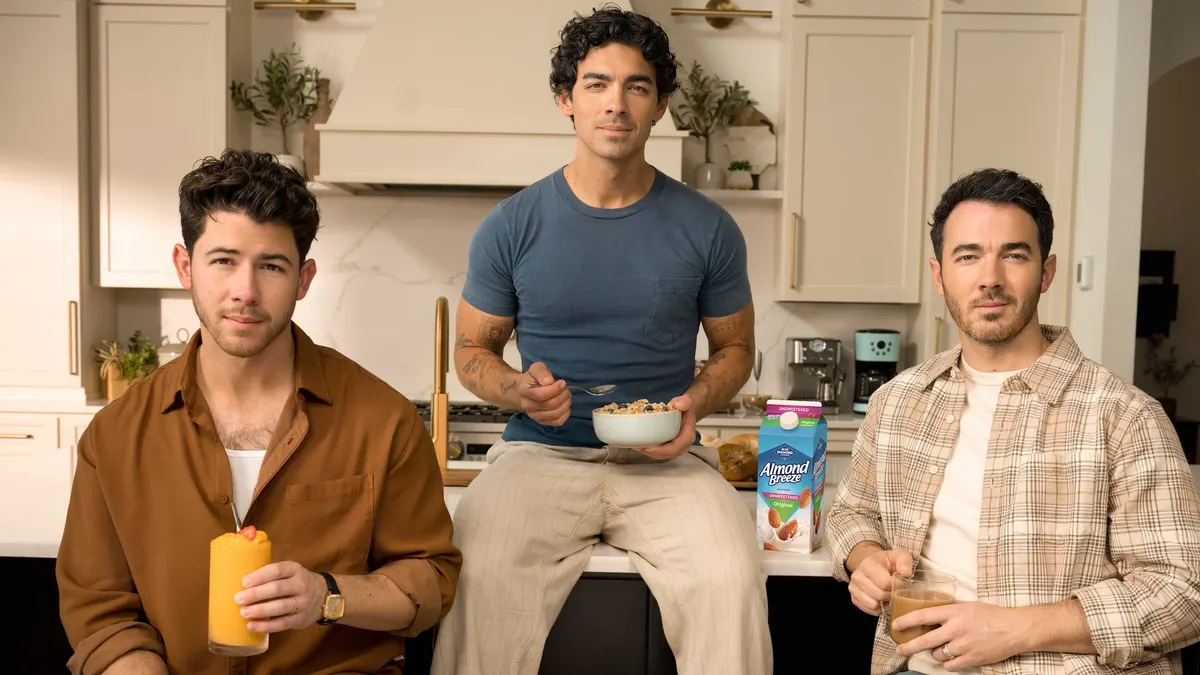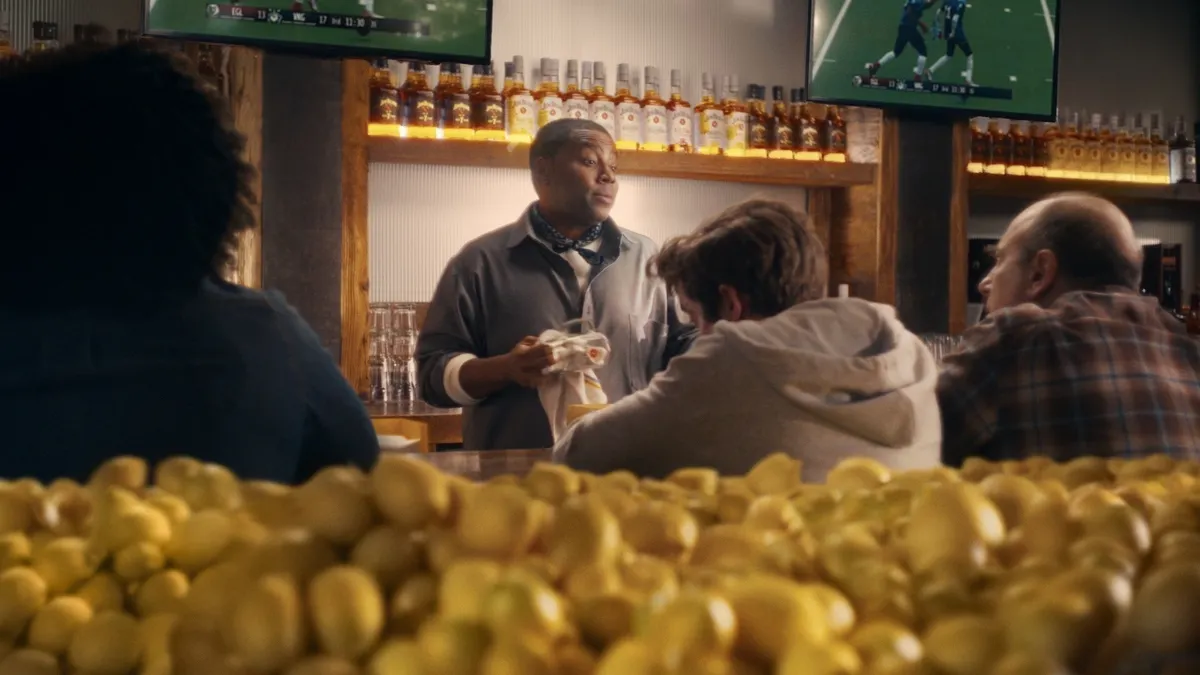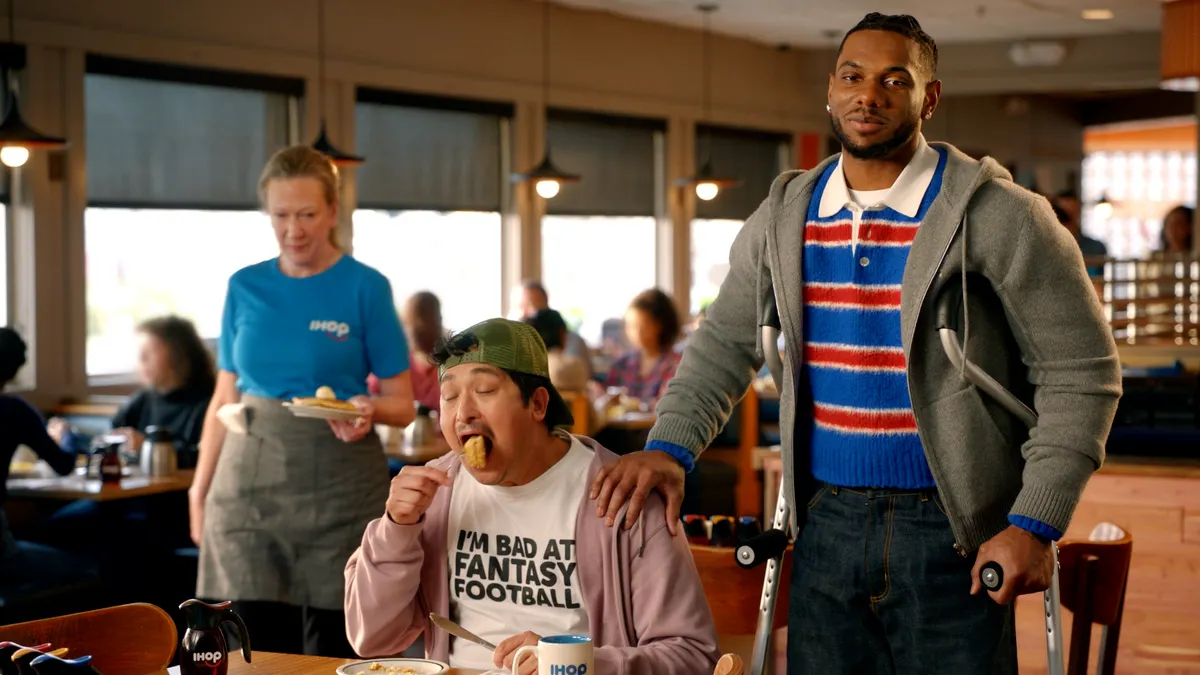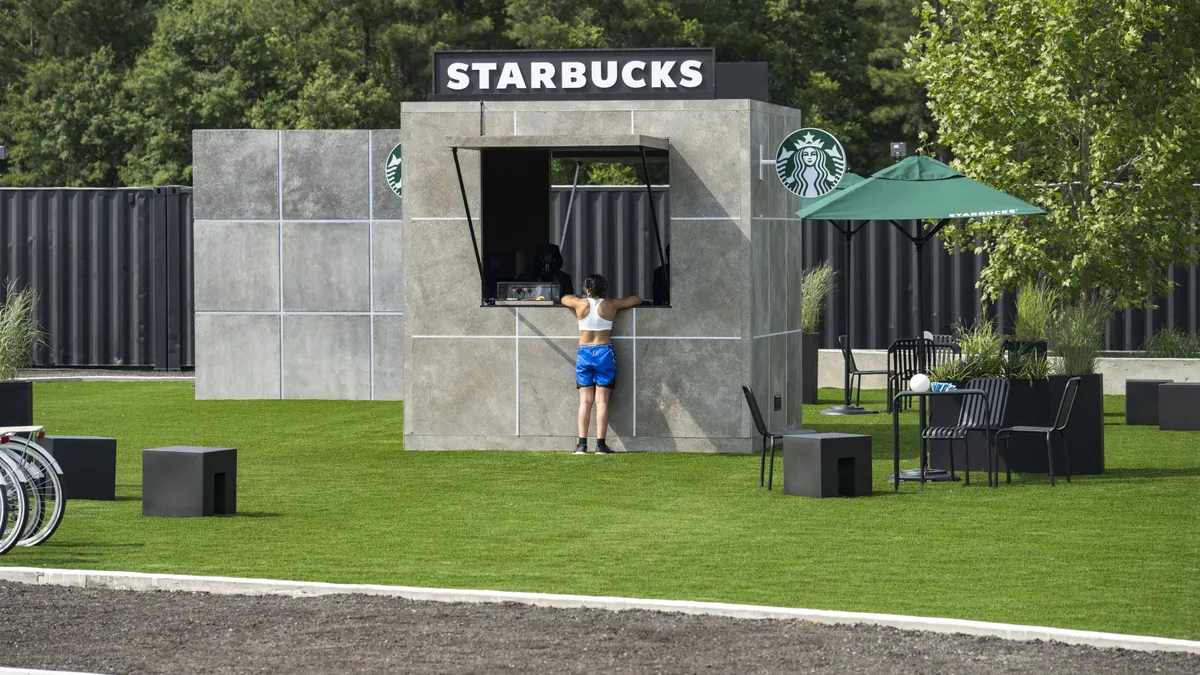Few people in the confections industry know Halloween better than Tim LeBel, the self-proclaimed chief Halloween officer at Mars Wrigley who has been preparing the company for the ghoulish holiday for decades.
But even for an industry veteran such as LeBel who starts working with retailers and readying Mars Wrigley's candy mix for a Halloween season two years into the future, the months leading up to this Oct. 31 have been fraught with uncertainty unlike anything he's seen before.
"I'd be lying if I didn't say there were some sleepless nights trying to get it right," said LeBel, whose real job title is Mars Wrigley's president of U.S. sales. "This has been one of the most challenging seasons I've ever experienced at Mars in my 30 years here. I feel more pressure than ever based on how such a difficult year that 2020 has been."
For candy and chocolate manufacturers who depend on Halloween for a large portion of their sales, the pandemic has upended what is already a challenging season to begin with. Candy makers don't know the degree to which people plan on celebrating the season, and if they do, what that will look like. Will it be traditional trick-or-treating, at home with family or small group parties? These answers could vary by region. Planning gets even harder for companies because candy sales are largely concentrated during the next few weeks of October.
"I'd be lying if I didn't say there were some sleepless nights trying to get it right. This has been one of the most challenging seasons I've ever experienced at Mars in my 30 years here."

Tim LeBel
President of U.S. sales, Mars Wrigley
Despite the uncertainty, major candy and chocolate companies Ferrero, Mars Wrigley and Hershey are all upbeat about Halloween. Hershey said retail sales were 19% higher compared to a year ago through the end of September. At Ferrero, sales were up 15% so far, while Mars Wrigley categorized the season as "strong."
"There is a certain amount of normalcy and joy that I think people are seeking now more than ever," said Phil DeConto, vice president of category management and shopper insights at Ferrero USA. "This will not be ordinary circumstances, but I don't think that we should expect underperformance on the part of [our] brands."
Not a one-size-fits all
Each year, shoppers spend $4.6 billion on Halloween candy, or about 13% of the estimated $36 billion in U.S. sales posted annually in the category, according to the National Confectioners Association. Halloween is the biggest revenue-generating time of the year, followed by Christmas, Valentine's Day and Easter.
It's a major reason why companies prepare months in advance for Halloween.
In March as the coronavirus was spreading across the U.S., Mars Wrigley was already receiving Halloween candy and chocolate orders that differed significantly by retailer, with some buyers cutting back on purchases while others took a more bullish stance expecting conditions from the pandemic to quickly improve. Since then, retailers have adjusted their orders depending on the severity of the infection rates or other trends in their area.
Mars Wrigley also needed to monitor countless other moving parts, including flavor profiles, bag sizes, how much people were willing to pay and the increase in online buying.
“We had to be very flexible and fluid,” LeBel said. "It’s going to look very different market to market, retailer to retailer. It’s certainly not a one-size-fits all."
To better reach consumers on their computers and smartphones, Mars Wrigley created a virtual trick-or-treating website and app in October called Treat Town where people could create personalized spooky avatars, customized Halloween decorations and "knock" on doors to collect candy. The chocolatier also tweaked its product mix by producing more smaller mixed bag offerings rather than the 200-plus count bags typically used for giving out candy to neighborhood children.
Getting an early jump on Halloween
Candy manufacturers are eager to solve those challenges given the billions of dollars the industry as a whole receives from Halloween. Hershey, the storied 126-year-old producer of Kisses, Milk Duds and Twizzlers, generates about 10% of its annual $8 billion in sales from Halloween, roughly half of which comes from trick or treating.
To maximize sales, Alex Corcoran, senior director of seasons at Hershey, said the company produced more of its popular assortment and snack size bags, featuring Reese's, Hershey’s, Kit Kat and variety brands, which have all seen sales surge during the pandemic. Seasonal candy offerings were displayed on shelves a few weeks earlier than normal to get a jumpstart, and large assorted bags were replaced in some stores by smaller-sized ones to meet an increased demand in at-home occasions.
Hershey also made less candy and chocolate adorned with Halloween themes like bats, pumpkins and spiders. It is instead producing more of its year-round packaging in seasonal cases and displays to minimize the chance of having unsold bags at the end of the season that would have to be offloaded at a discount.
"For everybody, there's a sense of uncertainty, and there still remains uncertainty," Corcoran said. "It's pushed us to think differently. We've been able to capitalize on what we know but we also know in a dynamic state what we would have to do differently."
In many cases, that extends beyond just candy and chocolate. Hershey, for example, worked with the Halloween and Costume Association and public health experts to create a color-coded map that gives consumers coronavirus-risk levels by county so people can determine how to safely to celebrate Halloween. The advice follows social-distancing guidelines released by the Centers for Disease Control and Prevention.
The sweets and snacks giant also partnered with Google to parse through consumer search data to see how people in a particular area are responding to better tailor its messaging; those in regions where the outbreak is severe might be looking to do indoor candy hunts with their family or backyard scavenger hunts while those in areas where a recovery has taken hold might be interested in how to venture out to trick or treat safely.
"There are a lot of creative things we've never done before, but they're giving us the opportunity to be more agile in the way we are thinking about communicating and messaging," Corcoran said.
'Cautiously optimistic'
There is plenty of uncertainty that explains why it is harder than normal for candy makers to prepare for Halloween. The National Retail Federation found more than three-quarters of 7,600 people surveyed for its poll said the virus is impacting their celebration plans, with overall participation down to 58%.
With fewer parties, trick-or-treating events and visits to haunted houses, spending is forecast at $8.05 billion, down from $8.78 billion in 2019. However, those who do plan to participate expect to spend $92.12, about $6 more than last year, by doling out more for home decorations, greeting cards and candy.
A poll by Piplsay of more than 30,000 Americans found 46% of parents will allow their kids to go trick-or-treating this year while 23% are unsure. Many took a pessimistic view of the season, with 41% saying they aren't looking forward to Halloween this year — 27% among them for safety reasons and 14% not wanting to celebrate it at all.
Rigo Viezca, global head of fast moving consumer good solutions at Signals Analytics, an analytics firm that works with candy makers and other businesses to understand and respond to external data, said consumer comments on major retailer websites and social media platforms show people remain upbeat on the prospects for trick-or-treating later this month either at home or in the traditional way.
Still, he was skeptical that sweet sellers are being as aggressive as they need to be with consumers shopping more online and predicted sales this Halloween will not be as robust as many companies believe.
"They will definitely be impacted. There will be a soft decline," Viezca said.
But it's hard to know whether those dire predictions will actually come to fruition.
"To the extent that anything is ever ordinary, we would be looking at Halloween performance very closely to see what is is that we can learn from this. The diligence that is needed now is probably even more so than in the past."

Phil DeConto
Vice president of category management and shopper insights, Ferrero
The reason: Candy and chocolate companies have turned to Easter for insight as to how consumers might respond this Halloween. As the spring holiday approached, Easter egg hunts, large family gatherings and other events were canceled as lockdowns swept the country. While candy sales for the period dropped, the decline was not as severe as many companies and analysts expected as consumers found other ways to celebrate in their homes or backyards.
Corcoran noted how early data for Easter showed a third of consumers said they weren't going to participate in the holiday, but in reality 15% chose to abstain. Sales across the category were down only 7% from the prior year, he said.
"We're cautiously optimistic," DeConto added. "I look back on our Easter performance, which was solid in an environment where a lot of the same concerns existed or potentially were heightened."
The National Confectioners Association was, not surprisingly, upbeat about sales early in the Halloween season. The organization said last month, Halloween chocolate and candy sales for the four weeks ended Sept. 6 were up 13% compared to a year ago. In the grocery channel alone, Halloween chocolate and candy sales jumped 17%. A study from market research firm Suzy separately found 80% of consumers plan to purchase at least the same amount of Halloween candy this year as in the past.
John Boylan, a senior equity analyst with Edward Jones, said candy companies and grocers have benefited from prior investments they made in data procurement and improvements in their supply chain that allows them to be more nimble when it comes to adjusting product mixes and determining how much to produce.
"That helps simply because it's easier for companies like Hershey to adjust," Boylan said. "It's hard to think of an industry that hasn't adapted."
The coronavirus has forced candy and chocolate manufacturers to rethink how they produce, distribute and sell their offerings to retailers and consumers, upending decades of conventional wisdom in the holiday staple category. DeConto said Ferrero, whose offerings include Butterfinger, Crunch and Nutella, is looking closely to see what it can learn from Halloween this year by studying changes in shopper behavior, retail patterns and how their competitors are responding.
LeBel at Mars Wrigley said candy and chocolate maker has survived through recessions, depressions, wars and other external forces that have stretched its business. But the coronavirus pandemic has been one of the most demading for the storied company.
"Halloween is one of the most challenging, complex things we do all year, and that is in a non-pandemic year," he said. "You layer in a pandemic during our largest season of the year. It has gone from complex to a daily operational challenge."


